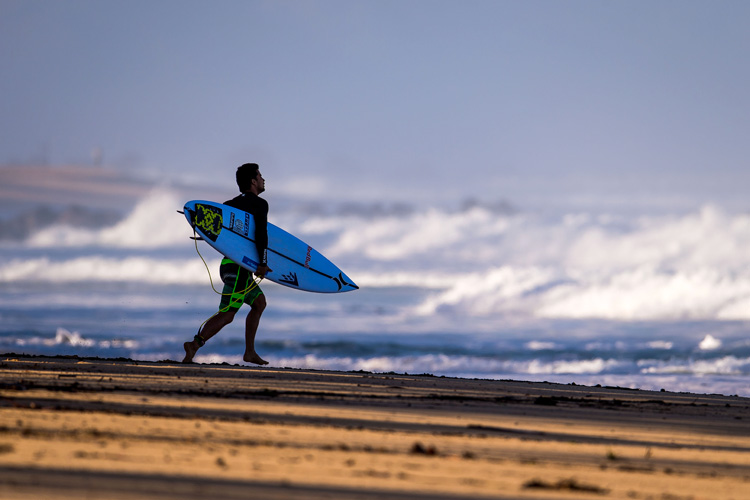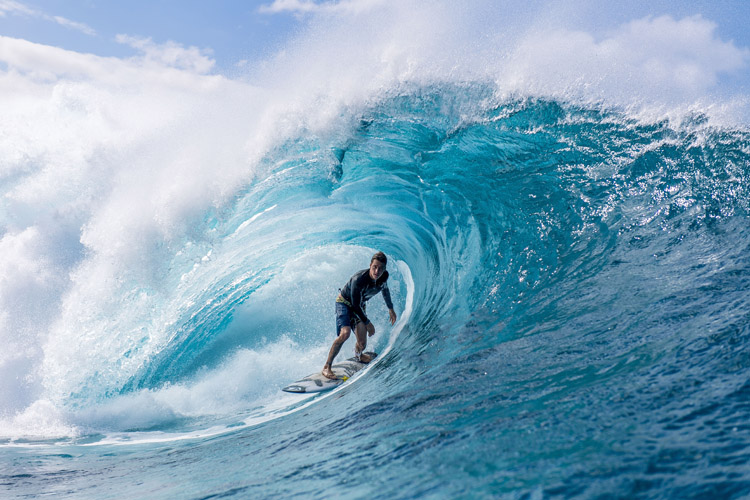How many people in the world surf? What is the breakdown between active surfers and non-active surfers? Although the facts and figures on surfing are scarce and relatively inaccurate, we've compiled the most cited evaluations.
Surfing is one of the most popular water sports on the planet. And, who knows, it's probably the number one water sport on the planet.
But despite surfing's high profile, fueled by big wave stunts and records, stunning photo covers, and idyllic searches for the perfect wave, the truth is that it is limited by the purpose of its own creation - the waves.
Of all 195 countries in the world, 48 are landlocked nations with no direct access to the ocean or sea.
So, unless they offer decent river waves or standing wave pools, they're out of the surfing equation.
Surfing could still be considered a niche sport. When you browse the internet looking for the magic answer, the most referred to number you'll find is 23 million.

Surfing vs. Popular Sports
But if the worldwide surfing community is comprised of 23 million surfers, how does that compare with other sports?
Football, also known as association football or soccer, is the most participated sport in the world.
According to the Fédération Internationale de Football Association (FIFA), the international governing body for the sport of football, there are around 265 million men and women playing the game.
Football is played literally everywhere - on the green pitch, on the streets, on the beach, and even inside homes and office buildings.
Now, you do the math. If both figures are correct, the number of worldwide surfers represents slightly less than 10 percent of football's global active amateur and professional players.
Let's be realistic.
Surfing does not have enough "followers" to rank in the top 10 most participated sports in the world, even when we wonder why our favorite surf breaks accommodate so many people at 8 am.
Surprisingly, or maybe not, sports like badminton, volleyball, basketball, cycling, American football, tennis, ice hockey, cricket, table tennis, baseball, and golf attract way more enthusiasts than wave riding.
And then, there're also swimming and athletics. If you're an occasional swimmer or an active runner, you're broadening that list a little.

The Unofficial Official Numbers
The International Surfing Association (ISA) is the world governing body for the sport of surfing, SUP racing, SUP surfing, and bodyboarding.
Since it was founded in 1964, ISA has never released an official number or study regarding wave riding participation.
As a result, several independent sources decided to do their own math based on loose data.
One of the most difficult variables to determine and interpret is participation frequency and regularity.
Is it fair to say that an active surfer is one who gets wet at least once a month? Probably.
Should a person who owns a surfboard but never paddles out be considered a surfer? Maybe not.
Otherwise, sports participation would be just an unreal and exaggerated sum of active and non-active surfers.
So, the calculation of the number of participants is always a difficult and not always precise exercise.
According to well-established and trusted sources like the ISA, the Surf Industry Manufacturer's Association (SIMA), and Surfing Australia, the worldwide surfing population is estimated at between 17 million and 35 million.
In 2012, the ISA handed the International Olympic Committee (IOC) a document that accounted for around 35 million worldwide surfers, the largest ever figure for participation in the sport of surfing.
The study also revealed the distribution of worldwide participants by continent, as follows:
- America: 13.5 million surfers;
- Oceania: 6.5 million surfers;
- Asia: 6 million surfers;
- Europe: 4.5 million surfers;
- Africa: 4.5 million surfers;
The document also highlighted a significant participation gap between men (81 percent) and women (19 percent), with 60 percent of all surfers aged above 25 years and 40 percent aged between 1 and 24.
Thirty-five million surfers might be too much. We could put it in the 25-to-30 million mark, but it also depends on how you see it (regularity, surfboard ownership, etc.).
When it comes to national figures, it is also not easy to find and get exact numbers. However, here are some of the available estimates:
- USA: 2.8 million surfers;
- Australia: 1.7 million surfers;
- United Kingdom: 500,000 surfers;
- France: 450,000 surfers;
- Spain: 300,000 surfers;
- Portugal: 200,000 surfers;
- New Zealand: 145,000 surfers;
- Canada: 2,000 surfers;
Surfing statistics also tell us that the global surf industry generates around $22 billion in revenue from hardware (surfboards, surf gear, and skateboards), wetsuits, footwear, and surf clothing.
Around $8 billion is generated only in the United States.

The Future of Surfing: Olympic Games and Wave Pools
It is hard not to predict a bright future for surfing as a global sport.
And two events will help make it an attractive physical pastime: the Olympic Games and the rise of the surf pool movement.
Whether you support surfing in the Olympics or not, the truth is that outdoor recreation is exposed to a vast viewership.
The Rio 2016 Olympic Games had an estimated audience of 3.6 billion people.
Not everyone watched the surfing events in Tokyo 2020, but if only one percent of the audience saw the 40 male and female surfers battling it out for medals, the number of viewers would be 35 million.
But the Summer Olympics, per se, are not enough to increase the number of surfing participants. You've got to have waves.
And what better time to bring surfing to the masses than now? With the rise of three or four reliable wave pool technologies, surfing will no longer be an ocean sport.
Man-made waves will allow young and older people to connect with the bliss of walking on water.
People will be able to learn and improve their wave-riding skills in unusual, landlocked areas and countries.
Surfing is making its way to becoming an outdoor recreation as accessible as finding a swimming pool.
Sooner or later, you could be surfing in Midland America, Paraguay, Niger, Russia, China, and Afghanistan.
With artificial wave pools, surfing will become as democratic as kicking a football or playing tennis.
And when that day comes, the number of surfing participants may very well double to over 50 million.
